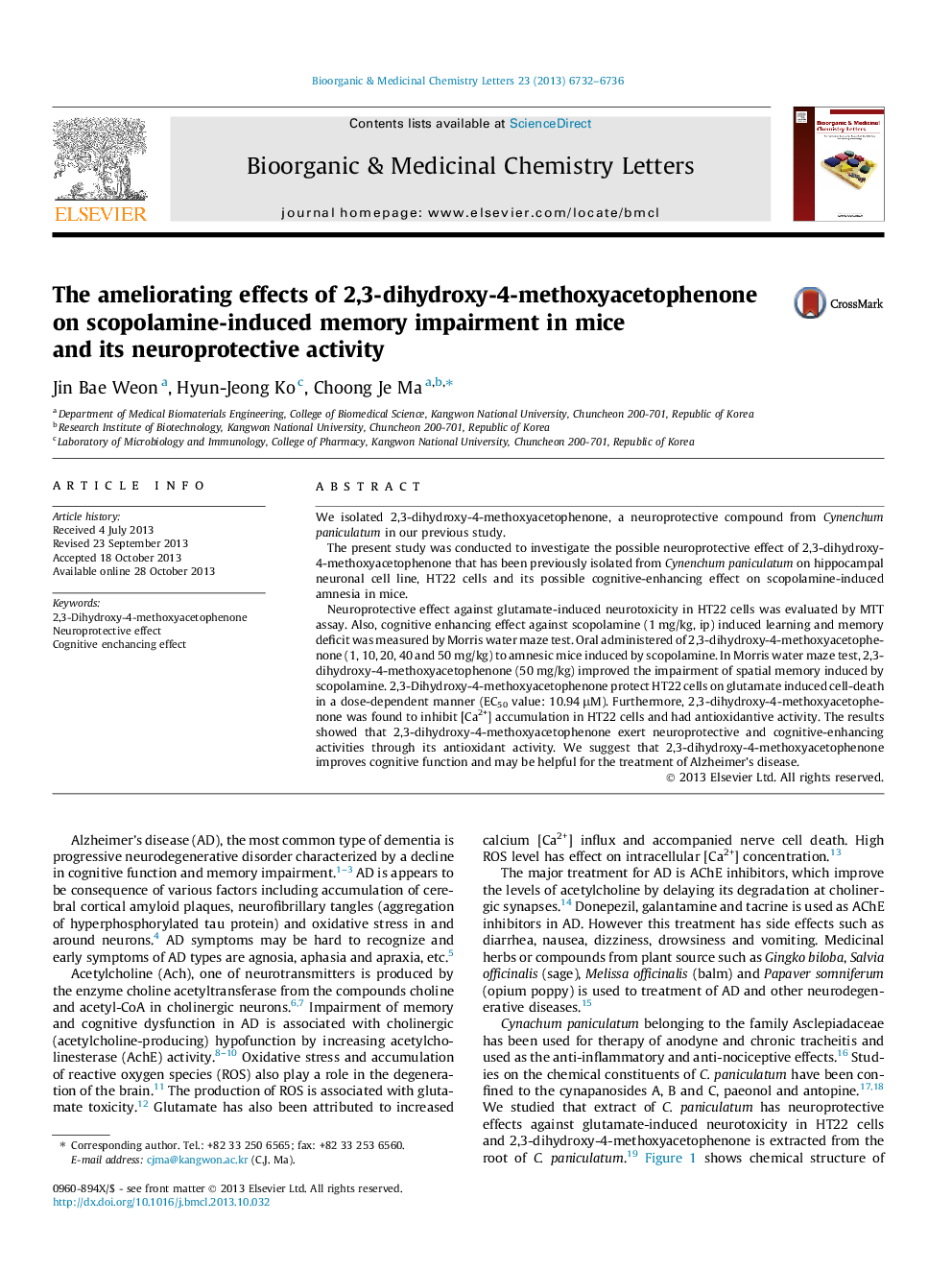| Article ID | Journal | Published Year | Pages | File Type |
|---|---|---|---|---|
| 10593311 | Bioorganic & Medicinal Chemistry Letters | 2013 | 5 Pages |
Abstract
We isolated 2,3-dihydroxy-4-methoxyacetophenone, a neuroprotective compound from Cynenchum paniculatum in our previous study.The present study was conducted to investigate the possible neuroprotective effect of 2,3-dihydroxy-4-methoxyacetophenone that has been previously isolated from Cynenchum paniculatum on hippocampal neuronal cell line, HT22 cells and its possible cognitive-enhancing effect on scopolamine-induced amnesia in mice.Neuroprotective effect against glutamate-induced neurotoxicity in HT22 cells was evaluated by MTT assay. Also, cognitive enhancing effect against scopolamine (1 mg/kg, ip) induced learning and memory deficit was measured by Morris water maze test. Oral administered of 2,3-dihydroxy-4-methoxyacetophenone (1, 10, 20, 40 and 50 mg/kg) to amnesic mice induced by scopolamine. In Morris water maze test, 2,3-dihydroxy-4-methoxyacetophenone (50 mg/kg) improved the impairment of spatial memory induced by scopolamine. 2,3-Dihydroxy-4-methoxyacetophenone protect HT22 cells on glutamate induced cell-death in a dose-dependent manner (EC50 value: 10.94 μM). Furthermore, 2,3-dihydroxy-4-methoxyacetophenone was found to inhibit [Ca2+] accumulation in HT22 cells and had antioxidantive activity. The results showed that 2,3-dihydroxy-4-methoxyacetophenone exert neuroprotective and cognitive-enhancing activities through its antioxidant activity. We suggest that 2,3-dihydroxy-4-methoxyacetophenone improves cognitive function and may be helpful for the treatment of Alzheimer's disease.
Keywords
Related Topics
Physical Sciences and Engineering
Chemistry
Organic Chemistry
Authors
Jin Bae Weon, Hyun-Jeong Ko, Choong Je Ma,
